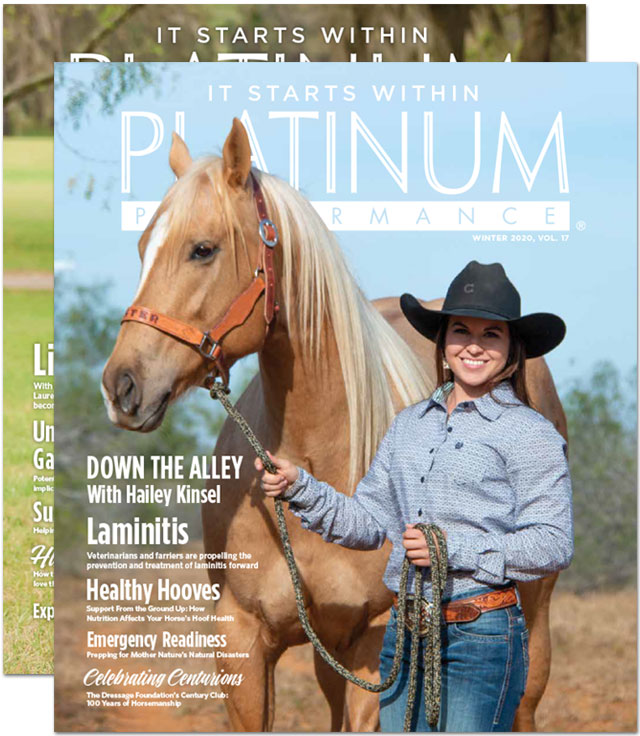New Research Shows a Novel Combination of Ingredients Supports a Multifaceted Strategy to Improve Joint and GI Health with Nutrition
Since 1996, Platinum Performance® has been committed to promoting wellness in horses, with a philosophy that food is medicine and preserving the fact that a natural grazing diet is essential to every horse’s health. What a horse eats affects its entire body, beginning within at the cellular level and impacting how the animal looks, feels and behaves. Science supports that the most beneficial equine diet encompasses quality pasture forage or hay that is supplemented with complementary nutrients to balance the diet — forage for fiber and proper digestion and gut health, with supplements to address nutrient deficiencies. A healthy digestive system is closely linked to weight management and immune health. Along with gut health, the other top concern in horses affecting all ages, breeds and activity levels, is joint care — one of the most discussed equine health categories. Efforts to keep joints healthy, sound and functioning optimally is a perpetual focus area of horse owners and veterinarians alike. Along with proven wellness nutrition focused on the roles of omega-3 fatty acids and antioxidants, new and innovative ingredients including tamarind seed extract, turmeric root extract and yeast extracts are providing advanced digestive and targeted joint support for total horse health.

Feeding Tips to Maintain Normal, Healthy Inflammation Levels
- Provide pasture and/or hay as the bulk of the diet
- Give a daily comprehensive omega-3 supplement with vitamins and minerals to balance a forage-based diet
- Include antioxidants, like vitamin E, particularly for horses without access to fresh pasture
- For low-sugar supplement carriers, choose unmolassed, soaked beet pulp or hay pellets
- Test hays and pasture grasses for sugar and starch content
- Eliminate sweet feeds and cereal grains
- Avoid corn, soybean and wheat germ oil
- Supply low non-structural carbohydrate feeds or healthy oils, like flax oil, for horses that need calories to maintain weight or hard-working equine athletes
The day-to-day diet affects a normal, healthy inflammatory response, can limit oxidative stress and supports immune health — all critical for systemic health and longevity.
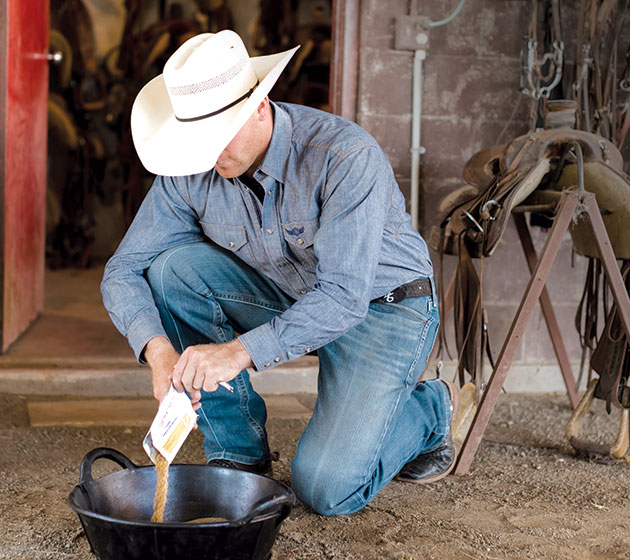
When grass is cut, dried and stored to make hay, most of the fragile fatty acids and fat-soluble vitamins are quickly oxidized and destroyed. Supplementation can help rebalance the fatty acid profile toward that of a natural grazing diet and support normal levels of inflammation.
When grass is cut, dried and stored to make hay, most of the fragile fatty acids and fat-soluble vitamins are quickly oxidized and destroyed. Supplementation can help rebalance the fatty acid profile toward that of a natural grazing diet and support normal levels of inflammation.
Wellness is Systemic Health
Nutrition is the cornerstone of a healthy horse. A balanced diet with adequate fiber levels, calories, essential fatty acids, antioxidants, amino acids, vitamins and minerals supplies the body with a strong foundation for daily wellness, tissue repair and fuels growth in young horses. The day-to-day diet affects a normal, healthy inflammatory response, can limit oxidative stress and supports immune health — all critical for systemic health and longevity.
Food plays a role. As a grazing herbivore, horses have evolved on a natural foraging diet that contains a fatty acid ratio of up to five times the total amount of omega-3 fatty acids than omega-6 fats. Because of this, horses are often considered “omega-3 animals” and thrive on a grass-based diet. Omega-3 and omega-6 fats are both necessary for the well-being of the animal, but the dietary ratio is critical to maintain normal, healthy levels of inflammation.
Not all horses have access to fresh grass, and a typical modern equine diet often includes a combination of forage, cereal grains, grain-based commercial feeds or concentrates. The equine digestive system is not designed to support a diet high in grain intake. Cereal grains — corn, oats, barley and wheat — and grain-based feeds provide excessive amounts of sugar or starch and an unhealthy ratio of essential fatty acids. Common feeding practices that include meal settings made up of grains and grain-based concentrated feeds have caused a widespread inverse essential fat ratio, drastically increasing the omega-6 fat concentration in the diet while decreasing the total amount of omega-3 fats. Also, when grass is cut, dried and stored to make hay, most of the fragile fatty acids and fat-soluble vitamins are quickly oxidized and destroyed. Supplementation with omega- 3 fatty acids can help rebalance the fatty acid profile toward that of a natural grazing diet and support normal levels of inflammation.
Antioxidants are another important component of feeding for wellness. Free radicals are chemicals produced in a horse’s body as a result of normal metabolism, or in response to exercise, inhalation of dust and air pollutants, and exposure to ultraviolet light. These unstable molecules can also become excessive following an injury. Oxidative stress occurs when there is an imbalance between the production of free radicals and the body’s ability to neutralize them with antioxidants. Oxidative stress can overpower the horse’s ability to internally defend itself and may result in tissue damage. Antioxidants internally scavenge and neutralize free radicals and prevent or limit oxidative stress. Providing dietary antioxidants can address oxidative stress in exercising horses, horses with bodily stressors, including a high-grain diet. Familiar antioxidants are vitamins C, E and beta-carotene, which is converted into vitamin A in the small intestine. Moreover, the trace minerals copper, zinc, manganese, iron, and selenium are essential for the internal formation of enzymatic antioxidants.
Using Ingredients with Multi-Purpose Benefits
- Omega-3 fatty acids help maintain normal inflammation levels in the body. The main reason they are able to have a multi-systemic impact on joints, digestion, metabolic health, reproduction, muscles, hooves, seasonal allergies, immune health and more is they are incorporated into every cell membrane of the body and work together with antioxidants. By supporting a normal, healthy inflammatory response and normal enzymatic reactions, omega-3 fats can specifically help maintain healthy joints, cartilage and normal soft tissue. For digestion, omega-3 fats can help maintain normal intestinal inflammation, which supports nutrient absorption and body condition.
- Turmeric root is a botanical extract that supports healthy inflammation levels and provides antioxidant benefits with extensive e!ects on gastric health and digestion, immune health, joint support, metabolism, seasonal allergies and more. When orally supplemented, turmeric’s attributes have been shown to immediately take e!ect within the GI tract to support gut barrier function, intestinal morphology and gastric health.
- Tamarind seed extract eases discomfort from daily activity and supports normal, healthy inflammation levels. It supports gastric health by maintaining intestinal wall thickness, preserving the gut lining, supporting healthy levels of gastric acid and promoting healthy levels of gastrointestinal inflammation.
- Yeast extracts diversify the prebiotic and postbiotic benefits delivering a more comprehensive approach to gut health by maintaining digestive balance, intestinal integrity and gut-barrier function. This balanced combination reinforces gut-mediated immune health throughout the body. Live yeast-based probiotic strains support normal digestion and nutrient absorption.
- Vitamin E is a powerful antioxidant that also supports immune health and promotes healthy levels of inflammation. It is absorbed into cell membranes and protects susceptible membrane components against oxidative damage. The reproductive, muscular, nervous, circulatory and immune systems all rely on vitamin E to some extent. It is in every cell and is distinctive in its supportive role within the spinal cord, brain, liver, heart, skin and joints.
- Glutamine is a unique amino acid that serves several purposes involved with muscle, gastrointestinal and immune health. It can be converted to glucose when normal glucose levels are low and used as muscle fuel. As an antioxidant, it helps carry nitrogen between tissues for recovery. Glutamine is heavily involved in intestinal health and vital in maintaining healthy intestinal cells, supporting villous cell function in the intestines, maintaining the impermeability of the GI tract and improving the immune response at the intestinal cell level.
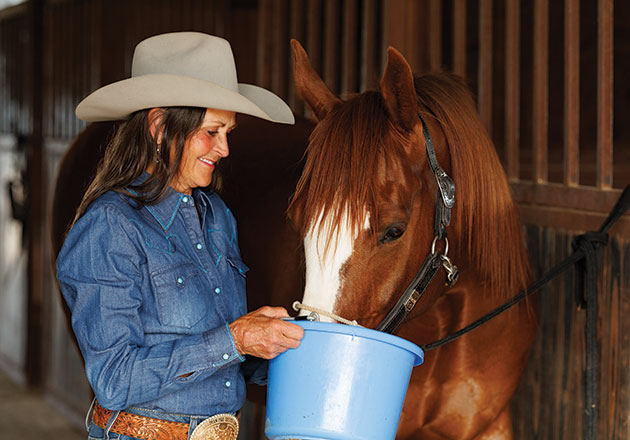
Use a balanced and comprehensive multi-nutrient formula to complement a forage diet.
PHOTO BY CAROLYN SIMANCIK
Use a balanced and comprehensive multi-nutrient formula to complement a forage diet.
PHOTO BY CAROLYN SIMANCIK
The Need to Supplement Forage Diets
Once pasture is cut and baled to make hay, many of the nutrients which makes grasses such an excellent food for horses, decrease dramatically. The levels of vitamin E, omega-3 fatty acids and beta-carotene, which is needed to internally make vitamin A, plummet once grasses are cut and dried. Because everything in the equine body is interrelated, a deficiency of a single micronutrient can cause several biological functions to operate improperly, or at the very least, not optimally. While hay is an excellent feeding choice, crucial nutrients are lost in the baling process to satisfy base nutritional requirements in all ages and life stages of horses is a primary and most basic reason for supplementing a forage-based diet.
Use a balanced and comprehensive multi-nutrient formula to complement a forage diet.
“A well-rounded management strategy that targets gut health can significantly benefit joint health in horses. Key nutrients, such as omega- 3 fatty acids and antioxidants, not only support gut function but also contribute to joint integrity. By focusing on gut support through high-quality forage and the addition of pre-/pro- and postbiotics paired with strategic supplementation, horse owners can promote a balanced gut microbiome, which in turn can help maintain healthy levels of inflammation with a positive impact on joints.”
— Canaan Whitfield-Cargile, DVM, PhD, DACVS, DACVSMR
University of Georgia
A New Way: Novel Nutrients to Support Digestion and Joint Care
Digestion
Beyond fulfilling basic dietary requirements for wellness, nutrition through targeted supplementation can be used therapeutically. Certain nutrients are able to support specific health areas, such as the gastrointestinal system. Proper digestion and a healthy gut microbiome — the diverse community of fiber-digesting bacteria, protozoa, fungi and other microbes in the hindgut — influence many different areas of equine health. Balancing the microbiome helps maintain healthy inflammation levels that in turn promote a wide variety of benefits to systemic health, particularly in support of the immune system. The digestive system and immune health are closely correlated. Creating a healthy gut environment significantly supports immune health as over 70% of the immune system resides in the gut.
Prebiotics, probiotics and postbiotics support normal digestion as well as maintain the vast gut microbiome. They nourish the gut and support hindgut health, gut motility, feed efficiency and much more. Due to the unique and diverse population of the microbiome, veterinarians recommend providing multiple strains of pre- and probiotics to improve gut health. A new proprietary blend of extracts derived from two active yeasts, Saccharomyces cerevisiae and Cyberlindnera jadinii, selected for their complementary properties, provides synergy to support digestive balance, intestinal integrity and gut barrier function, as well as a healthy immune response. Live yeast-based probiotic strains (Saccharomyces c. boulardii 1079 and Saccharomyces cerevisiae 1077) and mannan oligosaccharides (MOS), support normal digestion and intestinal cellular turnover and repair. The amino acid glutamine (L-glutamine) helps maintain a healthy gut and digestive system by supporting the gut lining and intestinal cell barrier, as well as supporting healthy gut inflammation. Omega-3 fatty acids support healthy inflammatory levels improving the intestine’s ability to absorb nutrients.
Important digestive benefits from the botanical extracts of tamarind seed (Tamarindus indica) and turmeric root (Curcuma longa) further support gastrointestinal health by promoting healthy inflammation levels in the digestive tract. These nutrients work together to support a healthy GI environment as well as to preserve immune health by supporting the maintenance of gut barrier function along with intestinal wall thickness. Tamarind and turmeric extracts contribute major antioxidant benefits, promoting oxidative balance and reducing oxidative stress.
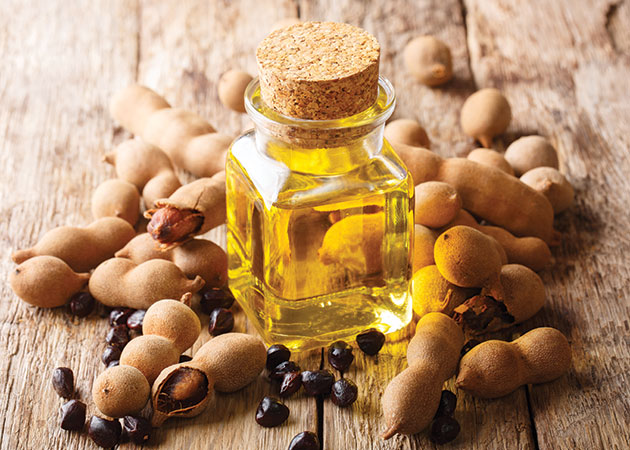
Tamarind seed extract offers extensive joint support by helping bone and joint structural integrity and inflammation associated with training and competition.
PHOTO BY ALLEKO
Tamarind seed extract offers extensive joint support by helping bone and joint structural integrity and inflammation associated with training and competition.
PHOTO BY ALLEKO
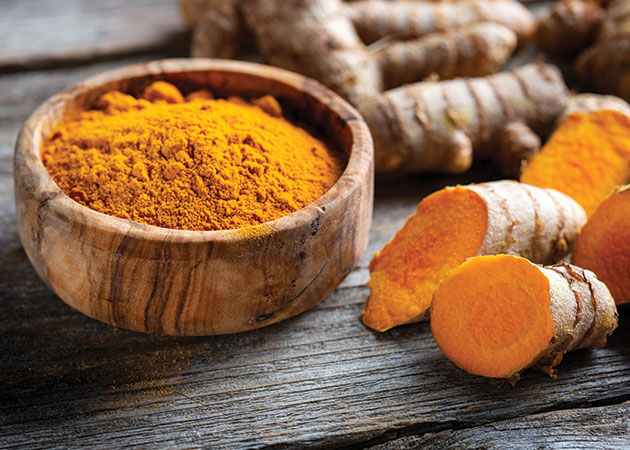
Turmeric supports joints and recovery
PHOTO BY OLLO
Turmeric supports joints and recovery
PHOTO BY OLLO
Joint Care
Maintaining healthy joints and preventing joint issues is a perpetual focus of equine management. The health of each joint is necessary, as even one impaired joint can cause discomfort and uncontrolled free radical activity. Oxidative stress is another culprit for joint aggravation. Excess free radicals can damage cell membranes and produce lesions in joints and other tissues as well as causing synovial fluid degradation. Additionally, limiting oxidative stress can support joint comfort and the longevity of the joint and surrounding soft tissue.
Botanicals have long been utilized for maintaining normal, healthy levels of inflammation and providing potent antioxidant effects. Recent research suggests that supplementation of tamarind seed and turmeric root extracts in horses supports healthy joint flexibility and performance. The seed from the tamarind tree, an evergreen indigenous to tropical Africa, is known to ease discomfort associated with daily activity. Tamarind seed extract offers extensive joint support by helping bone and joint structural integrity and inflammation associated with training and competition. Turmeric, a flowering plant in the ginger family, has been used in ancient medicine dating back to 1900 B.C. to support joints and recovery. The plant root is primarily known for its ability to support healthy levels of inflammation and provide antioxidant benefits for joints, digestion, immune health and more. With significant systemic antioxidant capabilities, turmeric regulates the production of free radicals associated with joint concerns.
Omega-3 fatty acids support healthy inflammatory responses, which naturally occur with age.
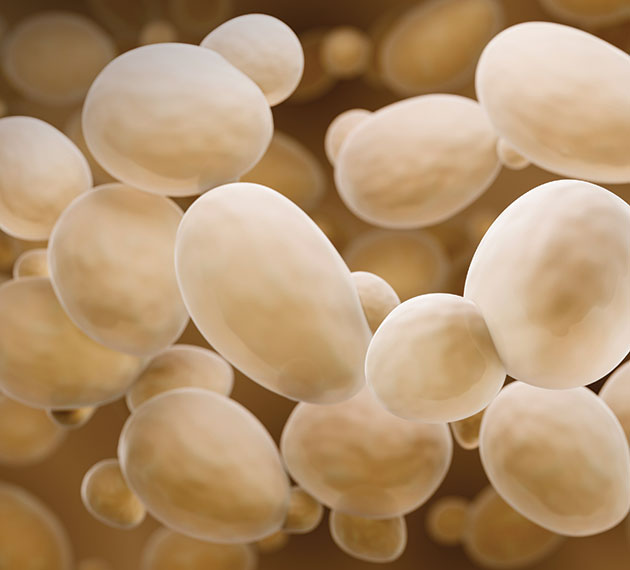
A new proprietary blend of extracts derived from two active yeasts, Saccharomyces cerevisiae, pictured here, and Cyberlindnera jadinii, selected for their complementary properties, provides synergy to support digestive balance, intestinal integrity and gut barrier function, as well as a healthy immune response.
A new proprietary blend of extracts derived from two active yeasts, Saccharomyces cerevisiae, pictured here, and Cyberlindnera jadinii, selected for their complementary properties, provides synergy to support digestive balance, intestinal integrity and gut barrier function, as well as a healthy immune response.
Get to Know the ‘-Biotics’ and Their Roles
- Prebiotics are inert, non-digestible feed ingredients that selectively promote the growth and/or activity of beneficial bacteria in the digestive tract, such as MOS and beta-glucans found in common sources as psyllium fiber and flaxseed. Prebiotics act to feed and promote the production of beneficial bacteria that digest hay.
- Probiotics are live microorganisms, like yeast, bacteria or fungi, that provide a health benefit beyond their nutritive value. Probiotics help restore the balance of good gut bacteria, thereby supporting fermentation and digestion, nutrient absorption and immune health. Probiotics are advantageous to any horse but may be especially beneficial to horses that are stressed, on antibiotics, being fed a high-grain diet or those with loose stool.
- Postbiotics are non-living microorganisms with or without their metabolites, that can improve gut health. They are a byproduct of fermentation by the microorganism on a substrate. Increasing the structural integrity of the intestinal lining and supporting immune health. They can also be useful in managing stress in the gut from exercise, hauling or feed changes.
All Angles: How a Multi-Strain Approach Optimizes Pre-, Pro- and Postbiotics
For gut health, it is often recommended to supplement with multiple strains or extracts for optimal support and to promote diversification. Research shows that supplementing with a blend of yeast extracts diversifies the prebiotic and postbiotic benefits, delivering a more comprehensive approach to gut health. A blend of prebiotic yeast extracts combines the benefits of multiple strains as each individual strain has its own optimal binding capacity, and yeast structure and composition directly contribute to their unique role and efficacy.
The equine gut microbiome comprises a wide array of diverse microbial species to digest its high-fiber intake, and each is important for gut well-being as well as immune health. It is also typically suggested to provide supplementary probiotics that contain multi-strain benefits as each individual strain of probiotics brings its own distinctive health benefits. Multiple strains can provide a broader range of health benefits, and some strain combinations may have synergistic e!ects working better together or more e!ectively when combined with one or more other strains.


